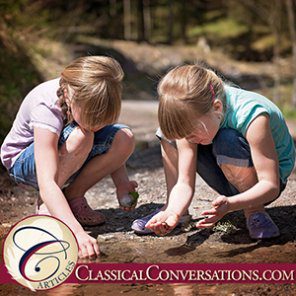Strange as it may be, I have found that students enjoy preparing for the National Latin Exam (NLE) and other Classical Conversations subjects. Even if they are not taking the NLE, students enjoy preparing for it. Since the test itself is multiple choice, it is easier to study for than doing regular exercises (you can get lots of practice tests at www.nle.org). Remember, preparing for the NLE will only help students—whether or not they decide to take it. Whatever caliber of Latin student your child is, there are a few things he or she should study at any rate. It will help performance in other subjects, and round out Latin knowledge nicely. And it can be a lot of fun!
Things to Study
- Body parts in Latin. This corresponds beautifully with both Challenge A and Foundations anatomy. “Ocular,” “auricular,” “sublingual,” and “femoral” make more sense after learning Latin body parts.
- Legal Latin. This will be helpful in Challenge B’s Mock Trial and any general government class.
- Latin abbreviations in English such as “i.e.,” “e.g.,” and “N.B.” Those are used throughout academic writing and should be memorized by Latin students. Plus, knowing the meaning in Latin will help your student keep the abbreviations straight (e.g., “e.g.” means “for example” in Latin).
- Roman History. This is helpful for Cycle 1 as well as for Challenge I government, Challenge Western cultural history, and Challenge IV literature.
- Mythology. A basic knowledge of this is not only fascinating and fun, but helpful for Cycle 1, reading Tanglewood Tales in Challenge B, and Challenge IV literature. Many students enjoy using the knowledge they have obtained from the Percy Jackson and Lost Hero series.
- Roman Forum and Monuments. Our neoclassical architecture is based on Roman architecture. It would be a great comparison study to compare Rome and Washington, D.C. I have had students create an amusement park modeled after Rome. That is always fun! I love that they can learn about Rome and think about amusement parks at the same time.
- Roman Houses. The Romans had very elaborate and beautiful houses with an atrium, a colonnaded garden called a peristylium, and multi-purpose rooms called cubicula. The structure of the houses is very interesting (beware of some of the artwork—there is one particularly scandalous house in Pompeii). After studying Roman houses, students can make their own. I have had students make edible houses, pamphlets advertising their Roman houses for sale, and even official floorplans.
This is just a list of ideas. Feel free to add your own ideas in the comments!




